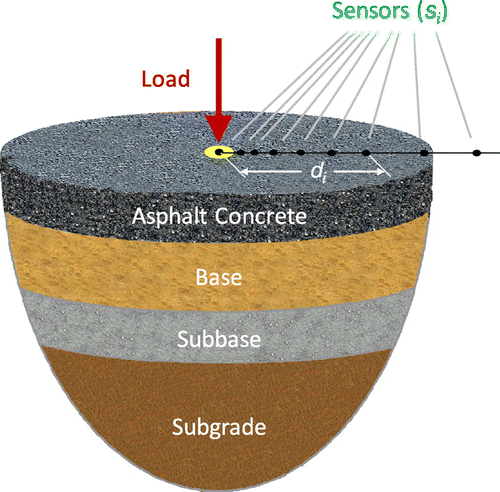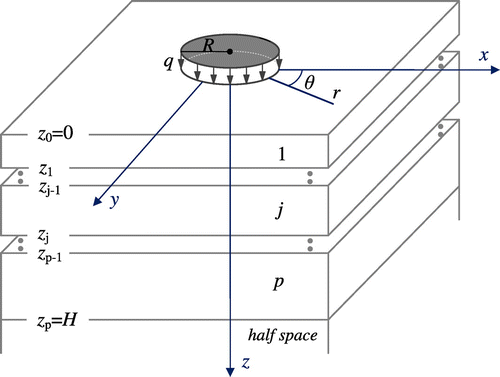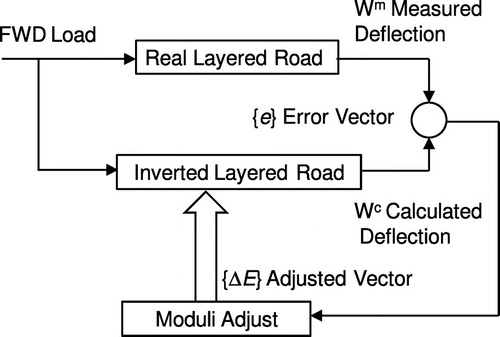Figures & data
Figure 1. Schematics of the FWD for measuring the surface deflections of a layered pavement at sensors si with distances di from the loading centre.

Figure 2. Schematics of a p-layered pavement half space under a uniform vertical loading q within the circle r = R on the surface.

Figure 3. Schematics of the SID method in moduli inversion of layered pavements using the FWD-measured surface deflections as inputs.

